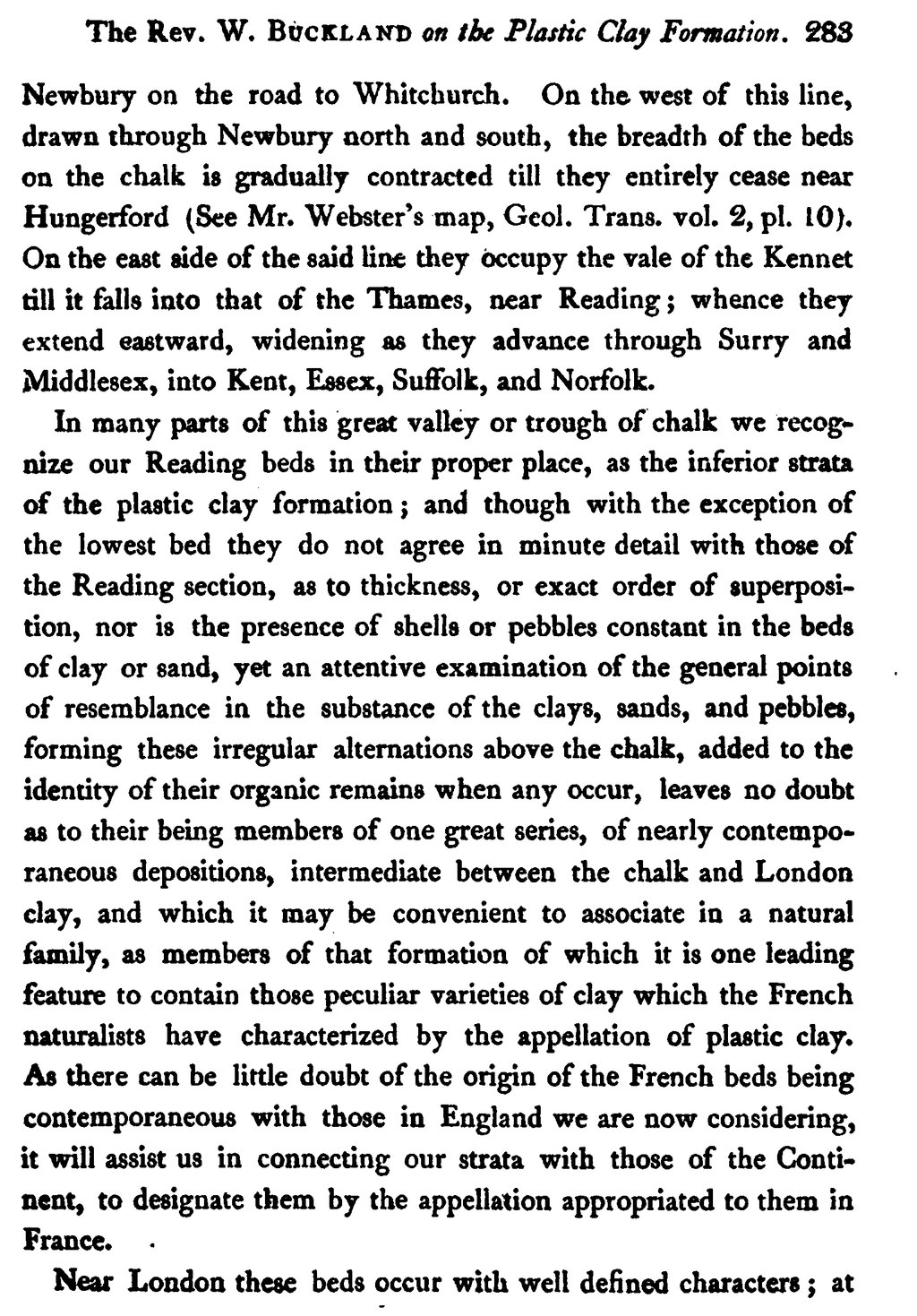Newbury on the road to Whitchurch. On the west of this line, drawn through Newbury north and south, the breadth of the beds on the chalk is gradually contracted till they entirely cease near Hungerford (See Mr. Webster's map, Geol. Trans. vol. 2, pl. 10). On the east side of the said line they occupy the vale of the Kennet till it falls into that of the Thames, near Reading; whence they extend eastward, widening as they advance through Surry and Middlesex, into Kent, Essex, Suffolk, and Norfolk.
In many parts of this great valley or trough of chalk we recognize our Reading beds in their proper place, as the inferior strata of the plastic clay formation; and though with the exception of the lowest bed they do not agree in minute detail with those of the Reading section, as to thickness, or exact order of superposition, nor is the presence of shells or pebbles constant in the beds of clay or sand, yet an attentive examination of the general points of resemblance in the substance of the clays, sands, and pebbles, forming these irregular alterations above the chalk, added to the identity of their organic remains when any occur, leaves no doubt as to their being members of one great series, of nearly contemporaneous depositions, intermediate between the chalk and London clay, and which it may be convenient to associate in a natural family, as members of that formation of which it is one leading feature to contain those peculiar varieties of clay which the French naturalists have characterized by the appellation of plastic clay. As there can be little doubt of the origin of the French beds being contemporaneous with those in England we are now considering, it will assist us in connecting our strata with those of the Continent, to designate them by the appellation appropriated to them in France.
Near London these beds occur with well defined characters; at
